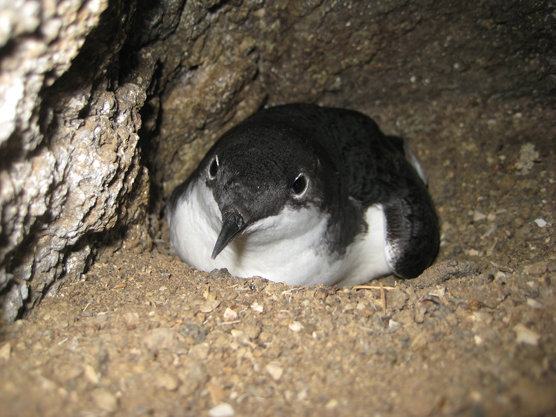|
You are viewing ARCHIVED content published online before January 20, 2025.
Please note that this content is NOT UPDATED, and links may not work. For current information,
visit https://www.nps.gov/aboutus/news/index.htm.

Sarah Thomson
Contact: Yvonne Menard, 805-658-5725 Download photos at: Anacapa Recovery Photos View the video at: http://youtu.be/RDJgMt19GRI Ten years after removing nonnative rats the ecosystem on Anacapa Island, including rare seabirds, is showing profound results of recovery. Ashy storm-petrels are nesting on the island for the first time ever recorded and Cassin's auklets have expanded their territories in the absence of rats as predators. Significantly, the number of Scripps's murrelets nests has quadrupled with a 50 percent increase of eggs hatched. Rats are known to have negative impacts to island ecosystems. Rats are the most significant cause of bird extinctions on islands and are estimated to be responsible for half of bird and reptile extinctions worldwide. Nonnative black rats, which were first reported on Anacapa Island in the early 1900s, threatened critical breeding habitat for these rare seabirds. They were eating approximately 70 percent of the eggs of the once common Scripps's murrelet, a state-listed threatened species. They also preyed upon native deer mice, reptiles, insects, intertidal invertebrates, and plants. To restore balance to the island ecosystem, black rats were removed in 2001 and 2002 using an aerial application of rodenticide bait. Some of the world's leading island experts and scientists from the United States, Canada, and New Zealand assisted project partners from Channel Islands National Park, Island Conservation, and the American Trader Trustee Council (comprised of the California Department of Fish and Wildlife, U.S. Fish and Wildlife Service, and the National Oceanic and Atmospheric Administration) in the rigorous planning process for this project. Island Conservation North America Regional Director Gregg Howald said, "Nowhere are the threats of extinction higher than on islands, and nowhere do we have greater opportunities to save species at risk. This successful project demonstrates the value of this critical conservation tool for other islands around the globe." "The Anacapa rat eradication is part of a larger effort to protect and restore biological diversity on the Channel Islands. On Anacapa, ongoing efforts to remove nonnative iceplant and restore native plant communities are important to this recovery," said Channel Islands National Park Superintendent Russell Galipeau. Jennifer Boyce, American Trader Trustee Council representative with NOAA stated, "On behalf of the American Trader Trustee Council, we are thrilled that the settlement funds have been instrumental in the recovery of seabirds on Anacapa Island." For more information visit:
|
Last updated: February 28, 2015
